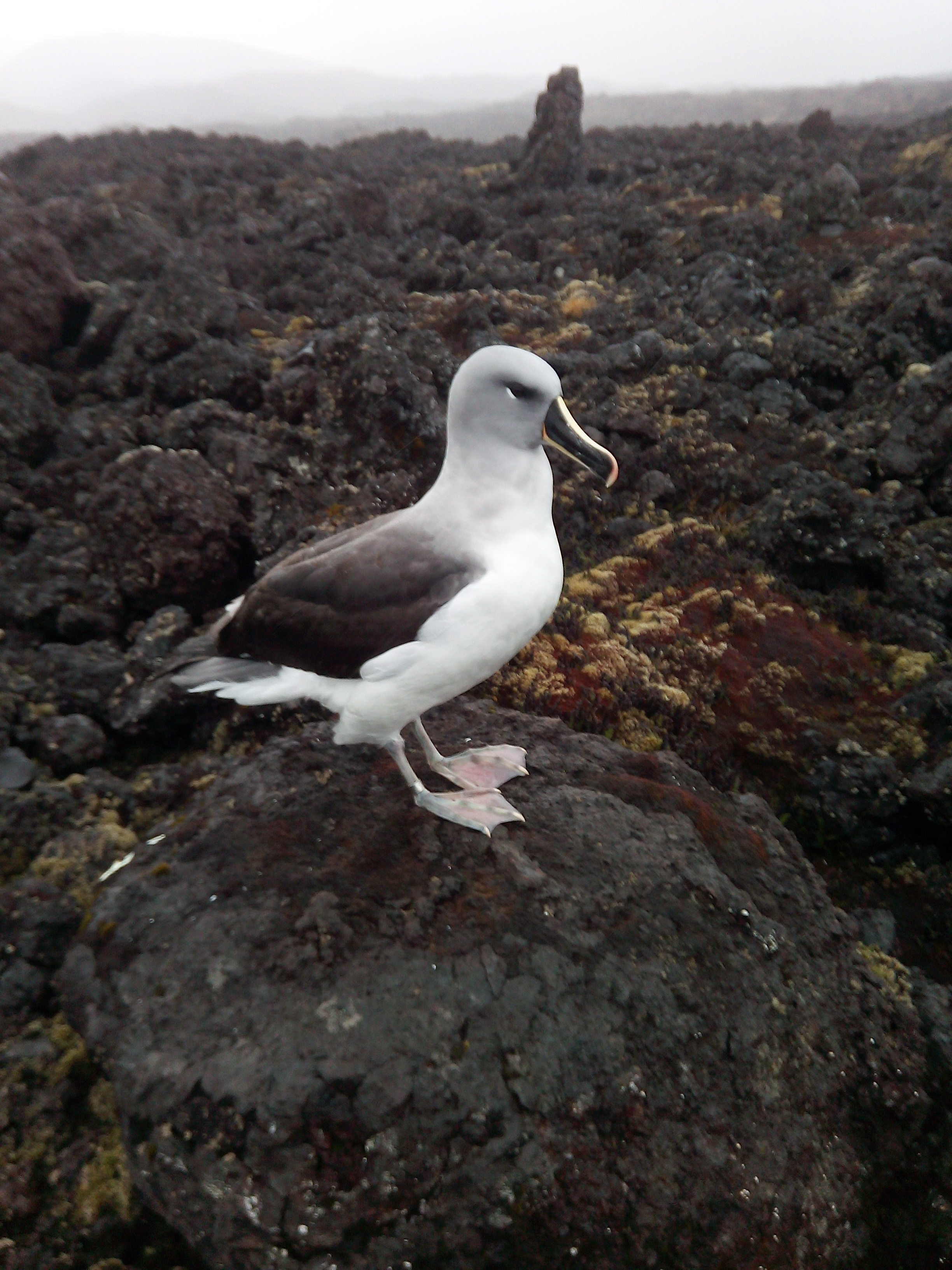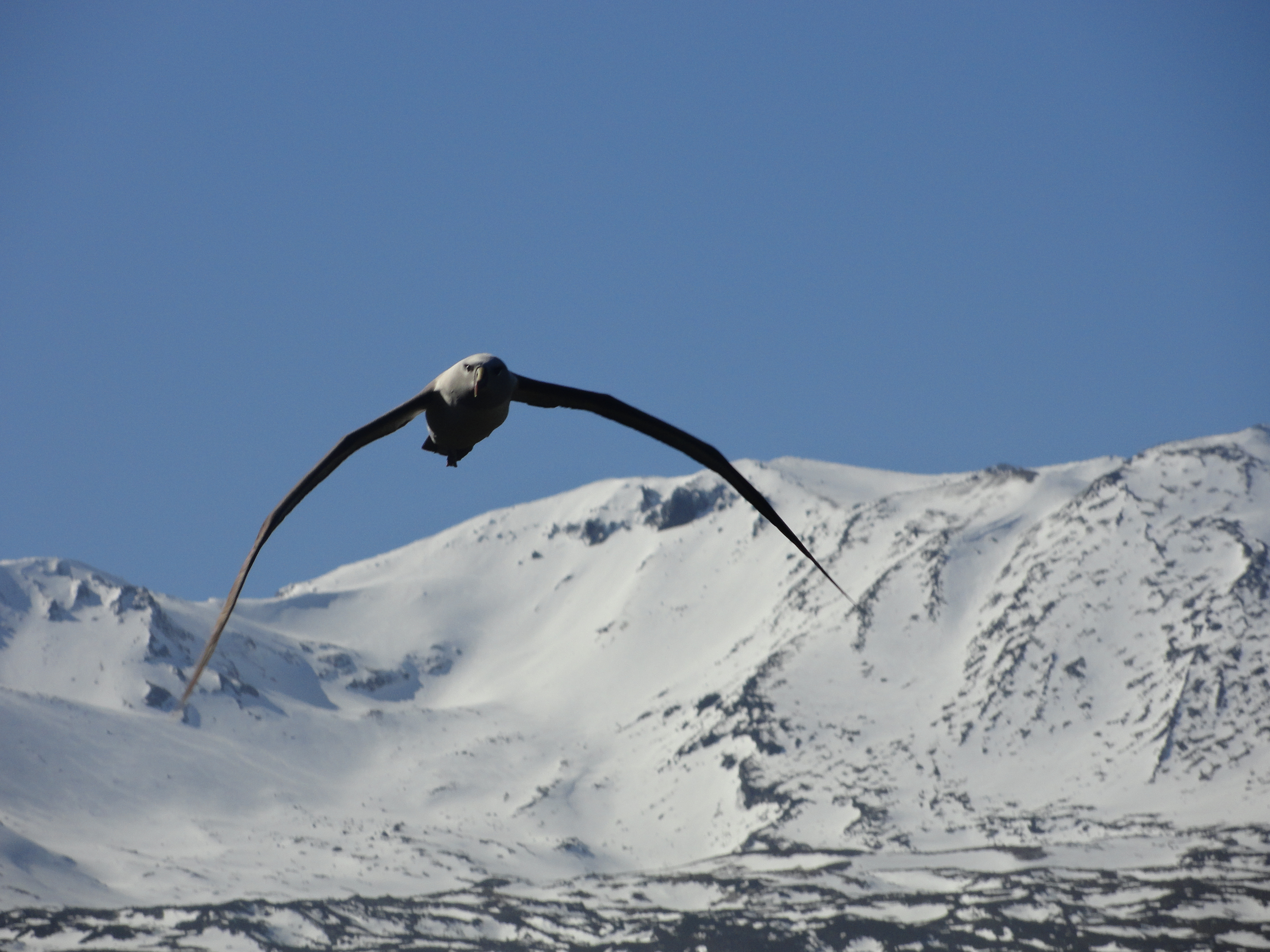
This Grey-headed Albatross survived a crash landing in a lava field. Not all are so lucky, photograph by Janine Schoombie
Janine Schoombie (Department of Mechanical and Aeronautical Engineering, University of Pretoria, South Africa) and colleagues have published in the journal Marine Ecology Progress Series on mortality in Grey-headed Albatrosses Thalassarche chrysostoma crash landing in strong winds below their inland colony.
A Grey-headed Albatross flies over a lava field on Marion Island, photograph by Kim Stevens
The paper’s abstract follows:
“Albatrosses exploit winds to travel vast distances across the ocean. Their morphology is adapted for low-cost dynamic soaring flight, but these adaptations confer low manoeuvrability, which may be risky when flying over land. This study investigates how wind conditions influence Endangered grey-headed albatross Thalassarche chrysostoma crashes in the valley below an inland sub-colony on Marion Island. Carcass surveys were conducted in a 1 km2 area spanning the length of this sub-colony (ca. 4000 breeding pairs) from October 2017 to June 2021. Hundreds of adult and fledgling albatross carcasses were discovered, some with evidence of fatal crash-landings in the form of broken bones. Wind data measured on the cliff-top above the colony were hsupplemented by computational fluid dynamics simulations of wind vectors over Marion Island. Most crashes occurred below the centre of the colony, where there are strong gradients in wind speed and direction under the dominant westerly wind conditions. Observations of albatrosses in flight indicate that most birds are killed when attempting to leave the colony, specifically when flying low above ground in strong wind. An average of at least 41 adults and 40 fledglings died after crashing into the valley annually. This represents an estimated 2% of the annual production of fledglings, 0.5% of the estimated annual breeding adult population and 11% of the adult annual mortality, suggesting a substantial cost to breeding at this inland site. For these long-lived seabirds, even low levels of adult mortality can have potential demographic consequences. This is the first study to document persistent wind-driven, land-based mortalities in albatrosses.”
Reference:
Schoombie, J., Schoombie, S., Connan, M., Jones, C.W., Risi, M., Craig, K.J., Smith, L., P. G. Ryan, P.G. & Shepard, E.L.C. 2023. Impact of wind on crash-landing mortality in grey-headed albatrosses Thalassarche chrysostoma breeding on Marion Island. Marine Ecology Progress Series 723: 213-225.
John Cooper, Emeritus Information Officer, Agreement on the Conservation of Albatrosses and Petrels, 05 December 2023

 Français
Français  English
English  Español
Español 